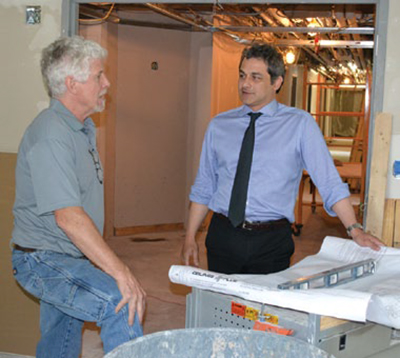
Last summer, I wrote to our membership and readers from a redesigned Expedition with added Penn Museum departments and content, reflecting on my first year as Williams Director and sharing our new mission statement: The Penn Museum transforms understanding of the human experience.
The two issues since—with a special focus on our new Native American Voices exhibition and our long-term work at Abydos, Egypt—have shown our new mission in action, challenging our perception and transforming our understanding of Native American communities, and our knowledge of a lost dynasty in ancient Egyptian history.
Transformation is at the heart of the Penn Museum strategic plan that I have spent my second year here working on with our staff, Board of Overseers, and the University Provost. The plan includes initiatives designed to transform our field, our engagement with the audiences we serve, our legacy, our relationships with our constituencies, and—through a phased renovation of some of our most iconic galleries—our building.
I am very pleased to report to you, at the close of that second year, remarkable progress on several of these initiatives, reflected in articles and announcements throughout this issue. The new Center for the Analysis of Archaeological Materials (CAAM) is poised to launch as I write, as is a new partnership program with the School District of Philadelphia, which will be offered to every public school 7th grade class in Philadelphia. More information on both will be forthcoming in our Winter issue, but we are pleased to introduce the staff who will take these initiatives forward in Museum News, starting on page 50.
The ambitious gallery renovation project—which I outline in more detail in the Building Transformation article on pages 4-5—will require more time to raise the significant amount of funding needed. We take this forward, though, with three substantial assets: a very thoughtful architectural feasibility study by Philadelphia’s Saylor Gregg, which offers practical solutions to issues of accessibility, added visitor amenities, climate control, and flexibility in gallery display; a new Executive Director of Galleries with a deep breadth of archaeological and museological experience to lead the teams that will create a new gallery narrative; and an extraordinary lead gift from our equally extraordinary Board Chair, Mike Kowalski, and his wife Barbara.
Transformation is underway at the Penn Museum. I invite our members—whose loyal support is at the heart of everything we do—to join us on the ride.
Julian Siggers, PH.D. Williams Director
